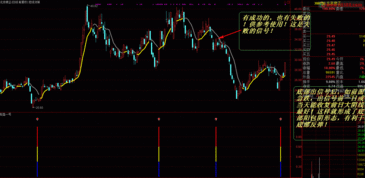股票轨道线图片
Understanding Stock Price Envelopes
Stock price envelopes are a technical analysis tool used by traders and investors to identify potential trend reversals and assess market volatility. Let's delve into what they are, how they are calculated, and how they can be interpreted.
What Are Stock Price Envelopes?
Stock price envelopes, also known as trading bands or envelopes, are lines plotted above and below a security's price chart. These lines are drawn at a certain percentage above and below a moving average of the stock's price. The purpose of these envelopes is to create a visual representation of a security's trading range and to identify potential overbought or oversold conditions.
How Are Stock Price Envelopes Calculated?
The calculation of stock price envelopes involves two main components:
1.
Moving Average:
Typically, a simple moving average (SMA) is used. This moving average is calculated based on a specified time period, such as 20 days or 50 days.2.
Percentage Deviation:
A percentage deviation is applied to the moving average to create the upper and lower bands of the envelope. This percentage can vary based on the trader's preference or the market conditions but is commonly set at around 5% to 10%.The upper envelope line is calculated by adding the percentage deviation to the moving average, while the lower envelope line is calculated by subtracting the percentage deviation from the moving average.
Interpretation of Stock Price Envelopes
1.
Trend Identification:
When a stock's price is trading near the upper envelope, it may indicate an overbought condition, suggesting that the security may be due for a price correction or reversal. Conversely, when the price is near the lower envelope, it may signal an oversold condition, potentially indicating a buying opportunity.2.
Volatility Assessment:
Widening of the envelopes suggests increased volatility in the market, while narrowing envelopes indicate decreased volatility. Traders often use envelope width as a measure of market uncertainty or stability.3.
Support and Resistance Levels:
The upper and lower envelopes can also serve as dynamic support and resistance levels. Breakouts above the upper envelope or below the lower envelope may signal potential trend continuations or reversals.
4.
Confirmation with Other Indicators:
Traders often use stock price envelopes in conjunction with other technical indicators, such as relative strength index (RSI) or moving average convergence divergence (MACD), to confirm trading signals and strengthen their analysis.Tips for Using Stock Price Envelopes
Combine with Other Indicators:
Envelopes work best when used alongside other technical indicators to validate trading signals.
Adjust Parameters:
Experiment with different moving average periods and percentage deviations to see what works best for the specific security or market conditions.
Consider Market Context:
Take into account broader market trends and news events when interpreting envelope signals to avoid false signals.
Practice Risk Management:
Always use stoploss orders and proper position sizing to manage risk when trading based on envelope signals.In conclusion, stock price envelopes are a valuable tool in technical analysis, providing insights into trends, volatility, support, and resistance levels. Traders and investors can leverage these envelopes alongside other indicators and risk management practices to make informed trading decisions.
股市动态
MORE>- 搜索
- 最近发表
-
- 沈阳医保二次报销,守护健康,减轻负担的双重盾牌
- 恒马金融,金融科技的创新先锋
- 百股跌停,股市风暴中的黑色星期五
- 上海医药集团,健康生活的守护者
- 银华金利,探索中国金融创新的璀璨明珠
- 美元汇率查询,掌握全球经济脉搏,洞察投资先机
- 木林森股份,探索中国LED照明行业的领军企业
- 股票300142,探秘沃森生物,解锁生物科技的财富密码
- 柳钢股份股吧,投资者的交流平台与信息宝库
- 通化金马股吧,投资者的交流平台与信息集散地
- 成都金宇集团,西南经济的璀璨明珠成都
- 探索和讯黄金网,黄金投资的数字化时代
- 雷亚尔对人民币汇率,理解货币兑换的艺术
- 长江电力股份,能源巨轮,照亮未来
- 探索福州市房产交易中心,房产交易的桥梁与指南
- 深入解析基金000001,投资小白的入门指南
- 高盟新材股票,分析、前景与投资建议
- 亚夏汽车股票,投资潜力与市场前景分析
- 深入解析,保险代理人资格证的重要性与获取路径
- 海王英特龙,探索深海的神秘生物





